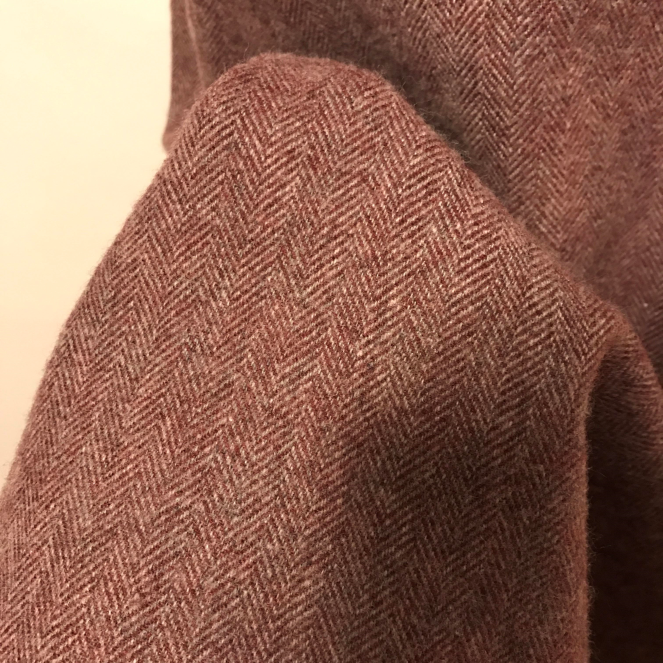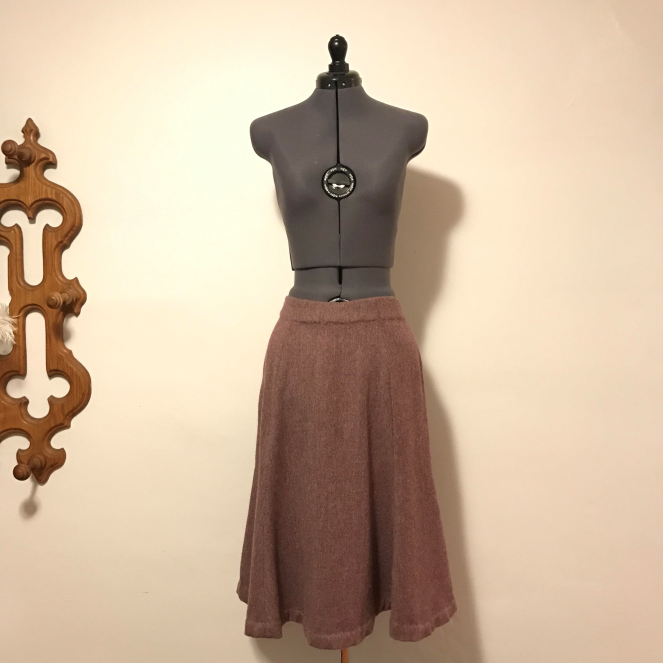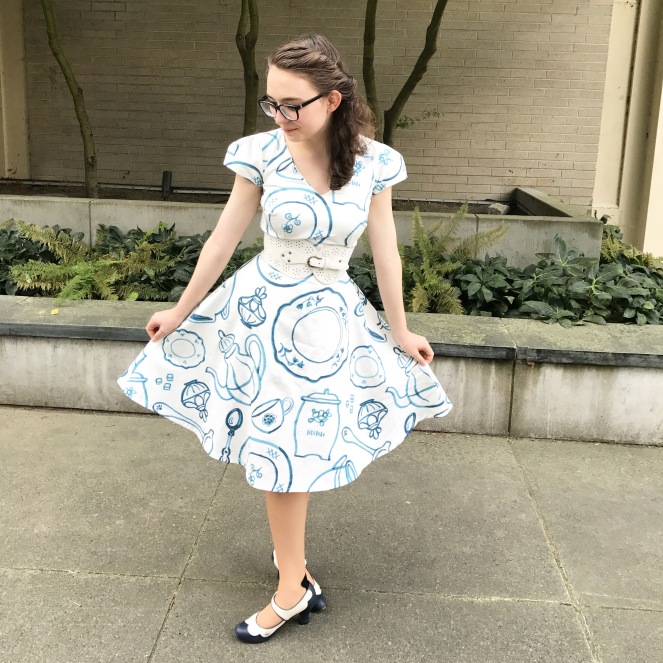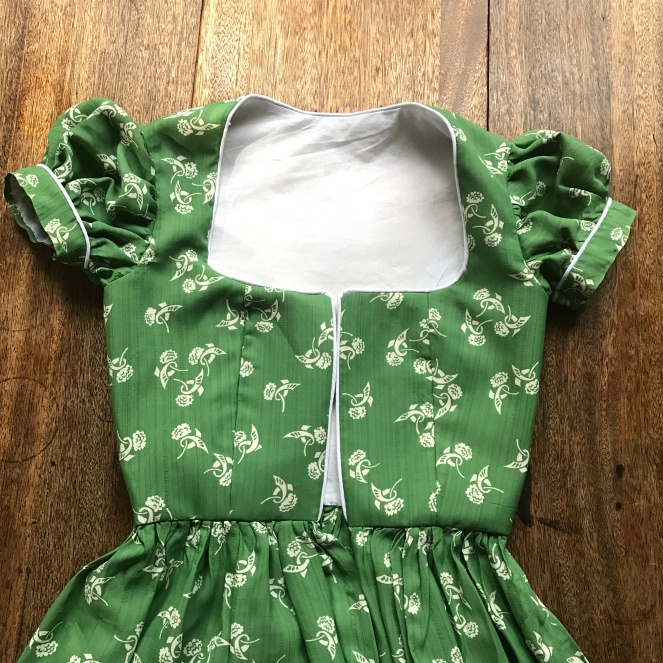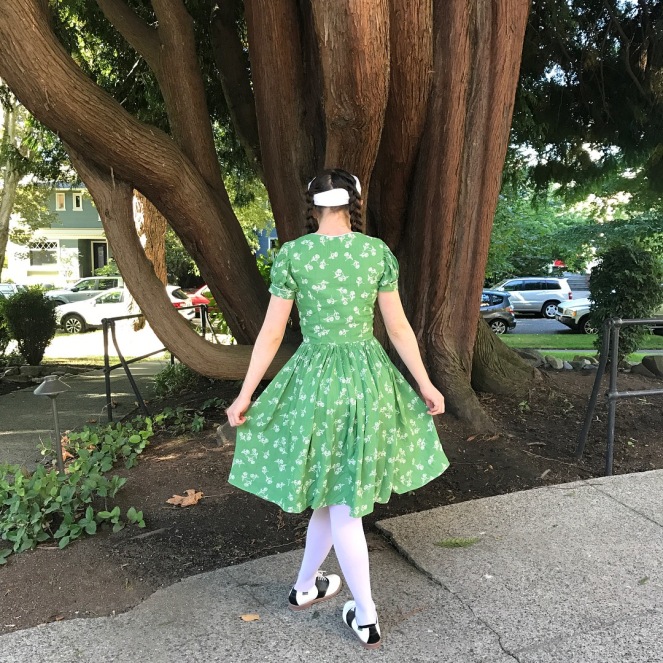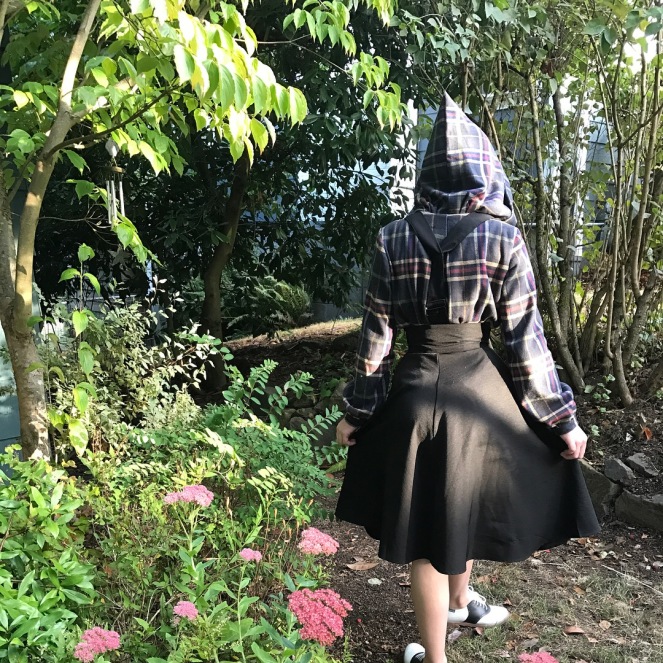An Autumnal Dress, Circa 1940
I first discovered the beauty that is Butterick 1148 in Bianca’s lovely blog post.

When I saw this illustration, I had been working on Maximilien Robespierre for a while and I was dreaming about what I would make after that costume was finished. Butterick 1148, hopefully in a madder orange wool crepe, was at the top of my list.
Of course, it took longer than expected to find the perfect wool crepe, and the dress itself took forever to make and even longer to photograph. However, it was 100% worth it.
Because I knew that I likely would be unable to find the original pattern, I decided to draft the dress based on the illustration. I started by draping a pattern on my dress form. Once I had a basic pattern that fit, I started sewing. I didn’t document the construction very well with pictures, but I will describe the changes I made to the inspiration image. The main change was that I mistakenly made the skirt a bit narrower. I also omitted the ruffles at the hips in favor of bows, and I added bows to the sleeves. Lastly, I changed the shaping in the underbust from five tucks like the illustration to three little darts.
My aunt and uncle gave me the most lovely little deco buttons, so I decided to utilize these too, even if they were a bit dirty from an unknown number of years in a button box.


I won’t describe the construction because a lack of photos would make that dry. Nevertheless, there are a few things that should be noted. The main reason that this dress took so long was that I was determined to make it neatly finished inside and out. This was made difficult because of the fray-ey nature of wool crepe. So, I decided to cover every single seam in lace seam covering. The neckline facings were finished too. I also decided to forgo hand-worked buttonholes (I’d had more than enough after Robespierre), so the bodice fastens with snaps. Lastly, when I was planning this dress, I’d apparently declared war on zippers (I dislike inserting them). My alternative, however, was likely more difficult. I chose to have a side closure that operated with hook and eye tape. It works; it’s just a bit odd. At least I had hook and eye tape and was able to avoid sewing in each individual hook and eye.
I also made a little heart-shaped hat to go with this dress! I found a ’30s illustration on Pinterest that depicted what was essentially a heart-shaped pillbox hat, so I decided to make one for myself. The hat serves to match the shoes that I like to wear with this dress (my Lillian heels by Royal Vintage, which are some of the best shoes I’ve ever worn) and tie the look together.
Anyway, on to pictures!






Now, for some more glamourous shots with (hopefully) better lighting:




All in all, I’m really happy with this dress. I’m also glad that I managed to finally blog about it! I actually finished construction in January…
Thanks for reading!


